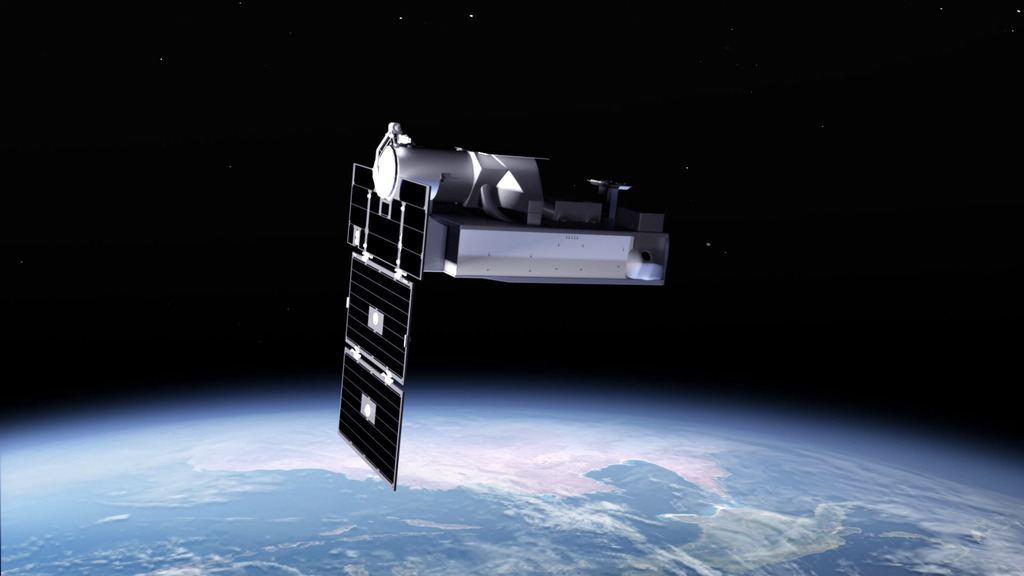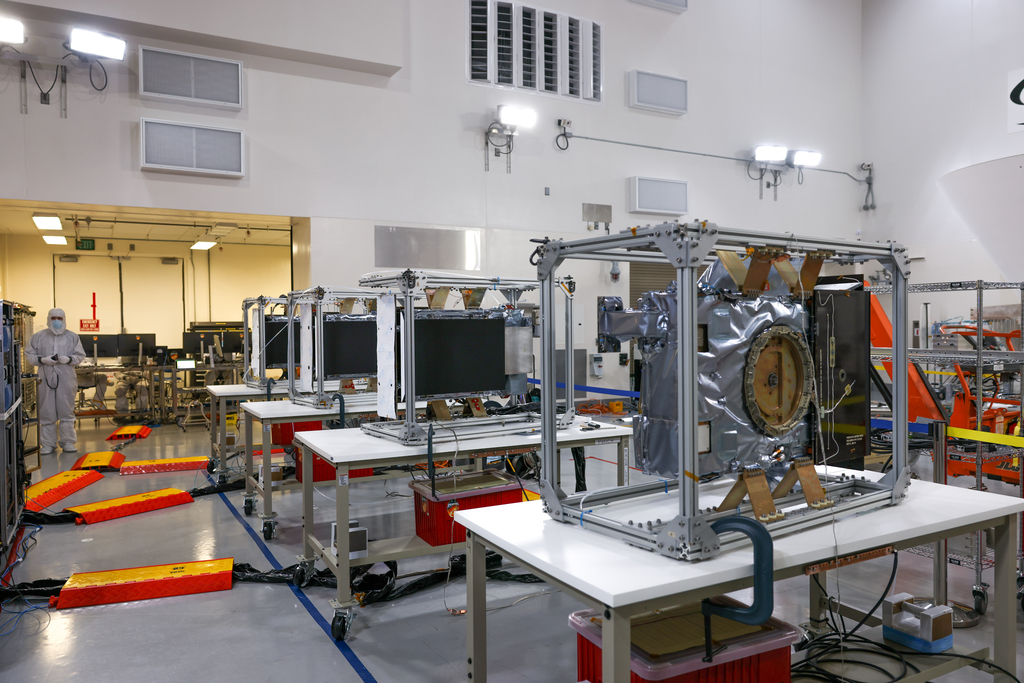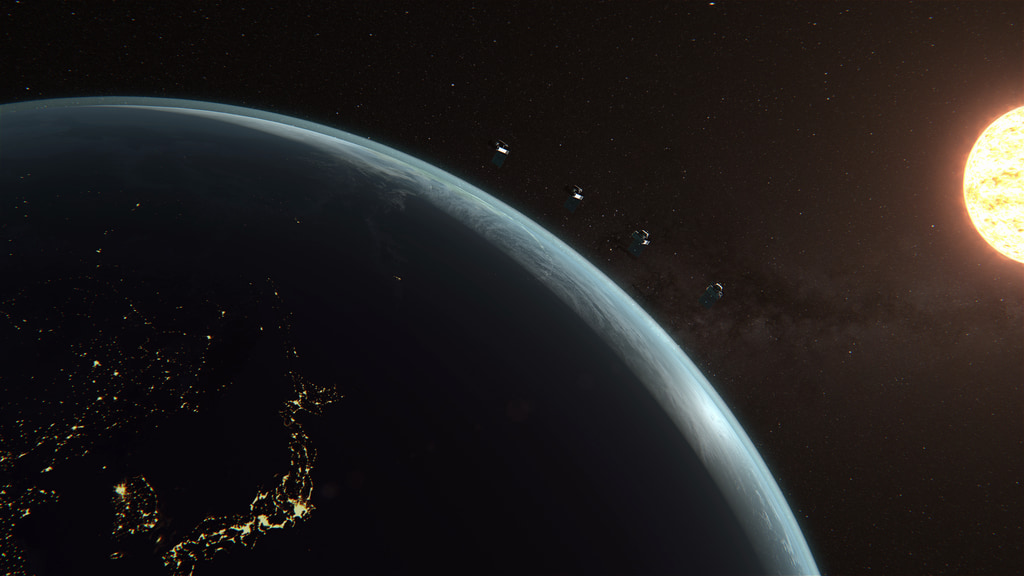NASA Interview Opportunity: Two Missions, One Rocket: One Shared Goal

Assocated cut b-roll will be posted by 5 p.m. EST on Monday, Feb 24.
Quick Summary:
SPHEREx and PUNCH will be launching together from Vandenberg, California, as early as February 27, 2025.
SPHEREx is a space telescope that will map the entire sky in 102 colors to study the origins of our universe, galaxies within it, and life’s key ingredients in our own galaxy.
PUNCH will study the outer portion of the Sun, the corona, to understand how solar wind forms.
Interview Details:
Taped interviews are available on Wednesday, Feb 26: Taped Interviews ONLY --> 6 am - 12 pm PST (9-3 pm EST)
Live interviews are available Thursday, Feb 27: LIVE interviews ONLY--> 5 am - 12 pm PST (8 am - 3 pm EST)
Click here to request an interview: https://forms.gle/kBZkx2RjuB1wbE6J9
Requests sent via the above form will have scheduling priority.
Please do not email requests.
Contributing new pieces to NASA's cosmic puzzle, the SPHEREx and PUNCH missions are cost-effectively launching together to analyze the cosmos and Sun, respectively.
NASA’s newest astrophysics observatory is SPHEREx (Spectro-Photometer for the History of the Universe, Epoch of Reionization and Ices Explorer). The space telescope will observe hundreds of millions of galaxies near and far, mapping the entire sky in 102 wavelengths that are invisible to the human eye. This will help scientists answer major questions about why the universe looks the way it does, how galaxies form and evolve, and the origins and abundance of water and other key ingredients for life in our galaxy. SPHEREx provides a big-picture view of the universe, complementing the work of more targeted telescopes like NASA’s Hubble and Webb.
Ride-sharing with SPHEREx is NASA’s PUNCH (Polarimeter to Unify the Corona and Heliosphere) mission. PUNCH will close a 60-year gap of knowledge about how the outer atmosphere of the Sun, the corona, becomes the solar wind. PUNCH will utilize four small satellites to provide the first-ever 3D global view of the Sun’s solar wind that gives rise to the magnificent northern and southern light shows called auroras.
Join a NASA expert to learn more about these two missions launching to space this week!
Suggested Anchor Intro:
Two missions, one launch, and one shared goal: understanding the bigger picture. Tomorrow/Today NASA will launch two separate missions on the same rocket, SPHEREx and PUNCH. SPHEREx will help us better understand the origins of our universe, while PUNCH will teach us more about the star that’s closest to home. Joining us now is NASA expert xxxx from the xxx mission.
Suggested Questions covering both missions:
1. The launch is Today/Tomorrow. What are you excited about for this launch?
2. We hear that these missions will ride-share to space. Where are these two missions headed?
3. How will each of these missions study the stars to help us better understand the big cosmic picture?
4. Where can our viewers learn more about these missions?
@NASASun for PUNCH. Also online at nasa.gov/punch
@NASAJPL for SphereX. Alson online at nasa.gov/spherex
Associated cut b-roll for the PUNCH Mission. TRT 2:28, no audio. Clips are separated by slates with the associated question. Graphics go with the following questions:
1. PUNCH consists of 4 small satellites that will study the Sun. What are the big questions we hope this mission will answer?
2. We hear that PUNCH will create “artificial eclipses” to study the Sun. Can you tell us what that means?
3. How will information collected by PUNCH help us link the data discovered by previous missions such as Parker Solar Probe?
4. The Sun is currently in a period of heightened activity. Can you talk about how intriguing it is to have PUNCH observing the Sun right now?
Combined B-roll package: SPHEREx & PUNCH missions. TRT 2:05, no audio. Clips are separated by slates with the associated question. Graphics go with the following questions:
1. The launch is Today/Tomorrow. What are you excited about for this launch?
2. We hear that these missions will ride-share to space. Where are these two missions headed?
3. How will each of these missions study the stars to help us better understand the big cosmic picture? (PUNCH and SPHEREx)
4. Where can our viewers learn more about these missions?
@NASASun for PUNCH. Also online at nasa.gov/punch
@NASAJPL for SphereX. Alson online at nasa.gov/spherex
SPHEREx extended questions broll. TRT 2:42, no audio. Clips are separated by slates with the associated question. Graphics go with the following questions:
1. SPHEREx will join NASA’s fleet of missions looking at the cosmos. What are some of the biggest mysteries that scientists hope SPHEREx will unlock?
2. How will SPHEREx complement the impressive work done by both Webb and Hubble?
3. How does SPHEREx look at the universe “through rainbow colored glasses” – what does that mean?
4. How long will it take for SPHEREx to complete its map and what will happen next?
Pre recorded soundbites with Dr. Nicholeen Viall / PUNCH mission scientist. TRT 6:11. Answers are separated by a slate with the associated question. Full transcript is available under the download button.
Dr. Viall answers the following questions:
1. What is the PUNCH mission?
2. Why do we want to understand the solar wind?
3. How will PUNCH work together with NASA's Parker Solar Probe?
4. PUNCH consists of 4 small satellites that will study the Sun. What are the big questions we hope this mission will answer?
5. Where will PUNCH be orbiting?
6. What does it mean that PUNCH will be launching on a ride share?
7. How will PUNCH work with other missions studying the Sun?
8. The Sun is currently in a period of heightened activity. Can you talk about how intriguing it is to have PUNCH observing the Sun right now?
9. What are you most excited about with the PUNCH mission?
10. How will PUNCH work with missions like NASA's EZIE solar mission that is launching soon?
11. Where can we learn more about PUNCH?
Pre recorded interview with Beth Fabinsky / Deputy Project Manager for SPHEREx / NASA JPL. TRT 6:52. Answers are separated by a slate with the associated question. Full transcript is available under the download button
Beth Fabinsky answers the following questions:
1. What is the SPHEREx mission?
2. What is an all-sky survey?
3. What does all sky mean?
4. What makes SPHEREx unique?
5. Why is an infrared wavelength important for an all-sky survey like this?
6. What types of objects will SPHEREx be able to see in its all-sky survey?
7. What are you most excited about with this mission?
8. What are you most excited about with this mission? (pt 2)
9. SPHEREx is a small but mighty spacecraft. Can you talk about how it can see so much of the sky despite being so small?
Pre recorded soundbites with Jamie Brock / Principal Investigator SPHEREx / NASA JPL. TRT 3:45. Answers are separated by a slate with the associated question. Full transcript is available under the download button.
Jamie Brock answers the following questions:
1. What is SPHEREx?
2. What kinds of objects do you expect SPHEREx to see?
3. What makes SPHEREx unique?
4. Can you talk about the different wavelengths SPHEREx will see?
5. Can you talk about some of the science goals of SPHEREx?
6. Can you talk about some of the science goals of SPHEREx? (pt 2)
Entrevista con la Dra. Bea Gallardo-Lacourt, Heliofísica del Centro de Vuelo Espacial Goddard de la NASA. TRT: 4:44
Entrevista con Sandra Cauffman, Directora Adjunta de la División de Astrofísica, Sede de la NASA. TRT: 3:40
For More Information
See the following sources:
Credits
Please give credit for this item to:
NASA's Goddard Space Flight Center
-
Technical support
- Michelle Handleman (eMITS)
- Aaron E. Lepsch (ADNET Systems, Inc.)
-
Producers
- Angel Kumari (NASA/GSFC)
- Alexa Figueroa (NASA Interns)
Release date
This page was originally published on Thursday, February 13, 2025.
This page was last updated on Wednesday, February 26, 2025 at 6:27 PM EST.
![Watch this video on the NASA Goddard YouTube channel.Music Credit: “Crafted with Science Instrumental” by Zak McNeil [ASCAP] via Universal Production MusicVideo Credit: NASA/Beth Anthony](/vis/a010000/a014700/a014773/PUNCH_thumb.png)




